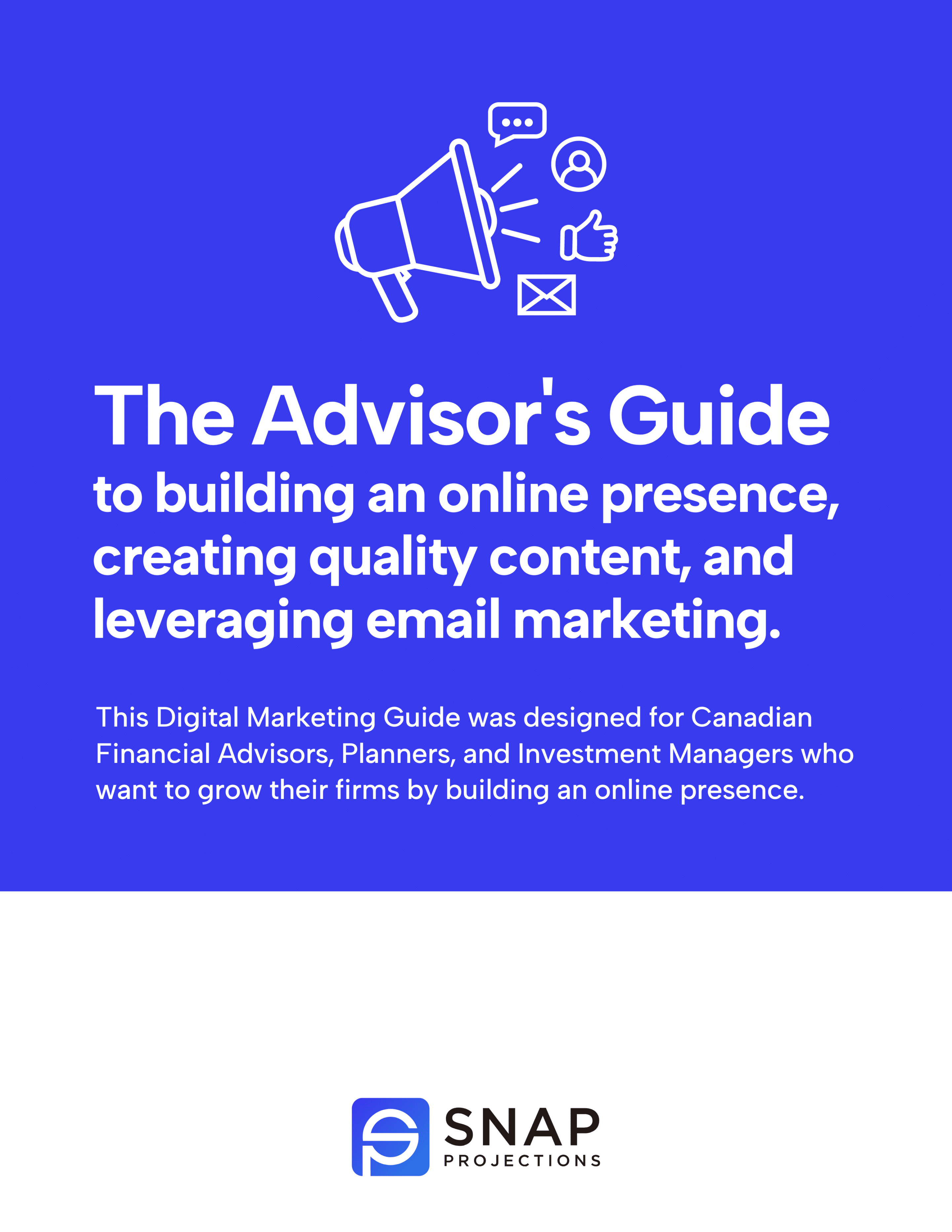When should your clients start taking CPP/QPP and OAS? Which accounts should they first draw from when they retire?
As a Financial Planner, you already know there are no one-size-fits-all answers to these questions. The reality is, it depends — so how can you provide your clients with answers that are both personalized and transparent? Fortunately, the Canadian Foundation for Financial Planning (formerly the FP Canada Research Foundation) has funded research into addressing these critical questions.
Join the team at Snap Projections for a virtual financial planning session to explore this crucial research in practice. During the online session recording, you will:
- Learn about the findings of this important financial planning research
- Learn how you can use transparent planning software to model unique client circumstances that will demonstrate the personalized advantages and disadvantages of different decumulation strategies during retirement
This session will highlight how Financial Planners can model the work explored in this research (in real-time) and discuss how you can help your clients navigate these decisions.
Research Papers & other resources that will be referenced:

Download your free digital marketing guide for Canadian Financial Advisors, Planners, and Investment Managers here.
Specifically, we will be working through:
- The importance of identifying your client’s goals to help compare and optimize their scenario.
- How to model different timing and drawdown strategies in Snap with consideration for their impacts on the projection (e.g., impacts to the percentage of the CPP maximum benefit, OAS clawback, marginal tax rates).
- How to compare scenarios over time to see which is advantageous given different assumptions and how to position the pros and cons of each strategy.
You can watch the replay of this retirement income planning session here and you will find further Case Study details below.
Canadian Financial Advisors, Planners, and Investment Managers can start a 14-day Free Trial of the financial planning software and follow along during the session recording.
Case Study details
I’d like to introduce you to today’s case study client, 64 YO Sonia Hayes. Sonia is 64, turning 65 in the New Year. As she approaches her final year of working as an HR Manager, she’s beginning to prepare for the transition of working and investing to retiring and drawing on her savings.
She has 4 key concerns:
- Deciding when to start taking CPP/QPP and OAS
- Determining the best order to withdraw from different accounts during retirement
- Choosing whether or not (and how) to use home equity in the plan
- Calculating the maximum retirement spending amount possible
Before we give any advice, we need to take a step back. If we want to truly help determine the optimal drawdown strategy, or uncover when it would be best to start taking government benefits, we need to first understand what the client’s goals are.
Does Sonia want to maximize her final estate value? Or is having adequate cash to spend her top priority?
Taking into account Sonia’s goals and priorities, we can look at comparing different strategies to best help her achieve that priority while still considering all of her unique financial and life circumstances.
We will be modelling all 4 key considerations to help Sonia determine when she should take her benefits, how to best drawdown her assets, what opportunities she may have to access her home equity, and also determine what her maximum spending potential could be.
Scenario Setup for Sonia Hayes
- DOB: January 1st, 1959 (64 years old)
- Resides in Alberta, Canada
- Return assumptions of 1% / 2% / 5% (Cash / Fixed income / Equity)
- $66K Base Expenses
- Additional Expense of $10,000 for Travel for first 10 years of retirement.
- 125K Income Indexed for Inflation Rate
- Pension Income of $30,000 and 1% Indexing for both periods
- Non-reg savings of $200K (40% FI / 60% E)
- TFSA of $100K (40% FI / 60% E)
- RRSP of $500K (40% FI / 60% E)
- TFSA Contribution room of $6.5K
- RRSP Contribution room of $30K
- Pension Adjustment of $13K
- Home Value of $750K, Cost of $400K
- 80% CPP
- $6,500 to TFSA
- $22,500 to RRSP
Research paper Highlights
Retirement Drawdown Choices by Doug Chandler
For this research project, Doug was essentially addressing the question — are there rules of thumb for best practices when it comes to drawdown in retirement? He approached this research with two primary planning objectives — how to maximize the value of the estate for beneficiaries and how to minimize the risk of financial distress during the individual’s lifetime. The overarching conclusion? It depends.
Doug determined that when evaluating RRIF strategies for a client, Financial Planners must take into account various factors, such as the client’s potential lifespan and future investment returns.
He went on to state that it’s important to note that relying on projections based on a single age and set of returns can create undue risk. Financial Planners must consider a retiree’s unique circumstances and create a personalized strategy accordingly.
In FP Canada’s press release, Doug is quoted saying, “When helping a client determine when and how to withdraw from a RRIF, there are complexities involved, and many unknowns. This research demonstrates the importance of seeing the bigger picture. That means accounting for things like current and future tax rates, income-splitting opportunities, investment risks and returns, and more.”
Snap’s very own Steve Arnott was invited to review this research and participate in an interview alongside Doug. The interview was conducted by Shawn Brayman, Chair of the Canadian Foundation for Financial Planning’s Research Committee, where it was discussed how Snap can be used to model the specific factors that Doug determined must be considered.
Get the Most from the Canada & Quebec Pension Plans by Delaying Benefits by Dr. Bonnie-Jeanne MacDonald
Throughout this paper, Bonnie-Jean MacDonald builds the argument that for the majority of Canadians, they are better off to defer CPP/OAS if they can afford to bridge the gap with other investments. She goes on to say that retirement financial planning practices are currently encouraging Canadians — whether directly or indirectly — to take their CPP and QPP benefits early. She says that the financial services industry needs to fundamentally rethink its approach to advising Canadians who are nearing retirement.
Snap Projections is a Canadian financial planning software provider. Financial Advisors, Planners, and Investment Managers are eligible to start a 14-day Free Trial of Snap. The video above was filmed demonstrating how Advisors can create more value for their clients with personalized decumulation strategies, using Snap Projections. This webinar was filmed exclusively for the group at FP Canada. Live attendance was required to be eligible for the applicable CE Credit.

